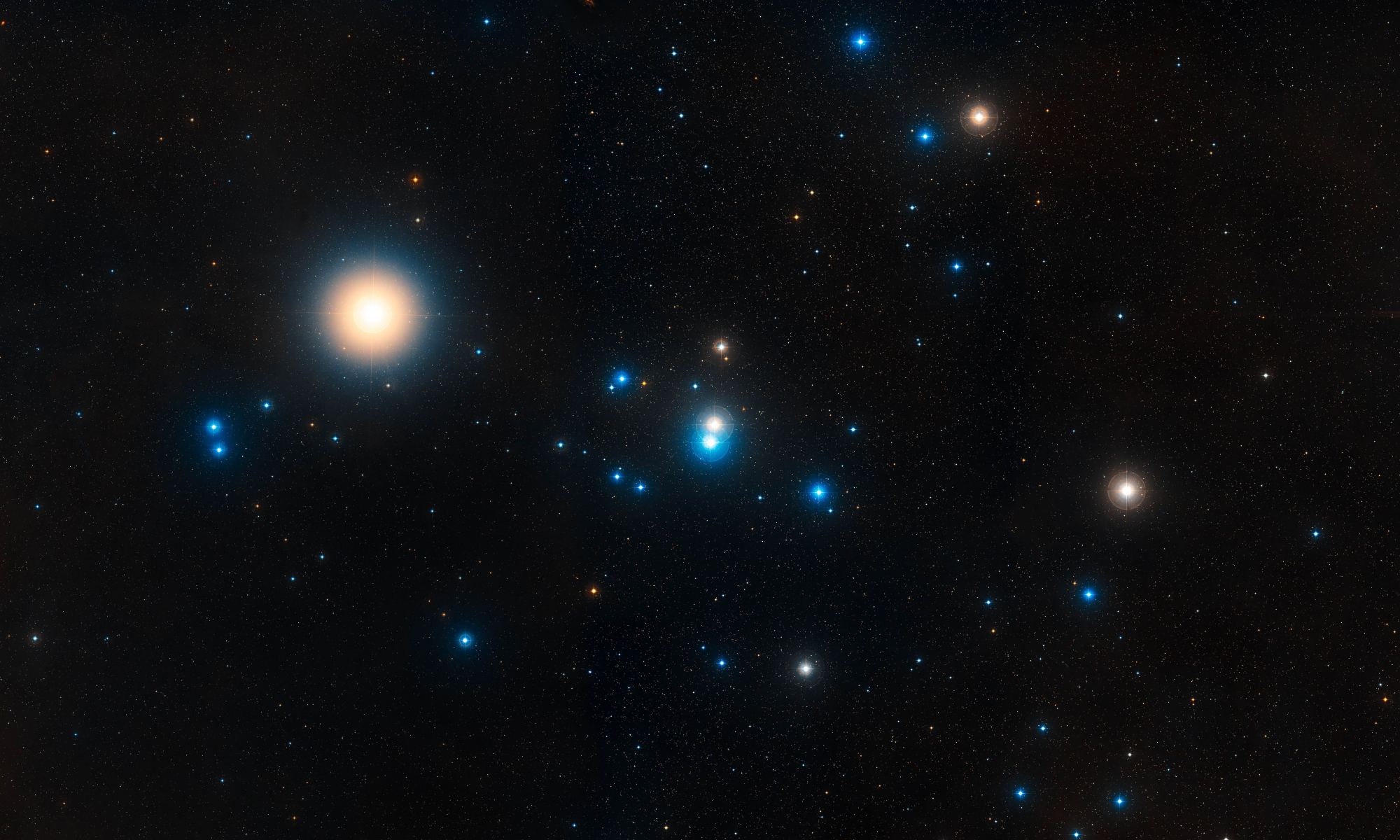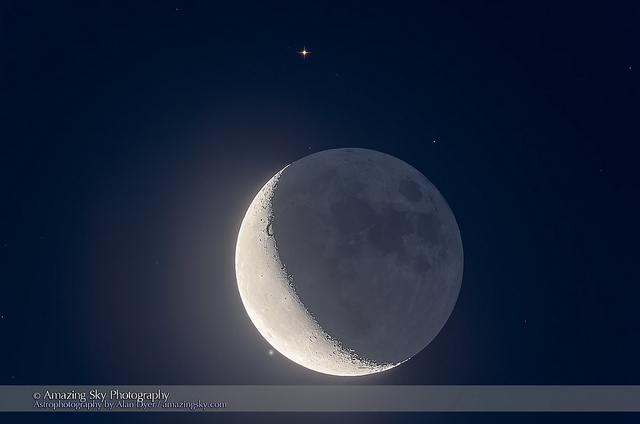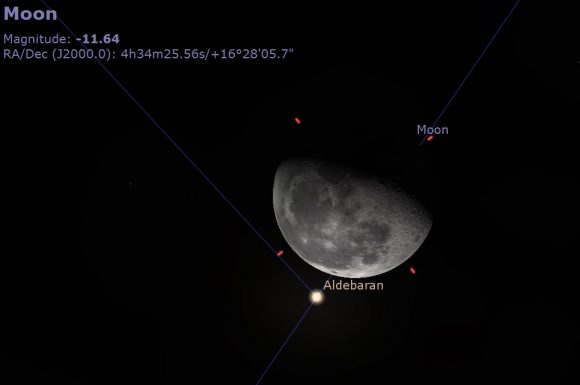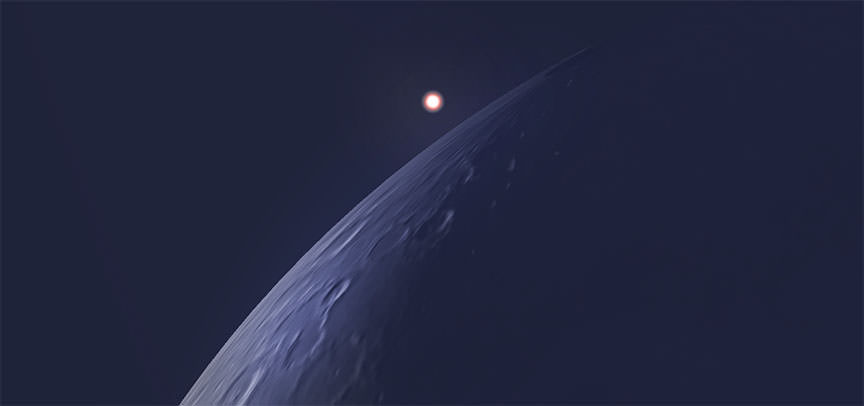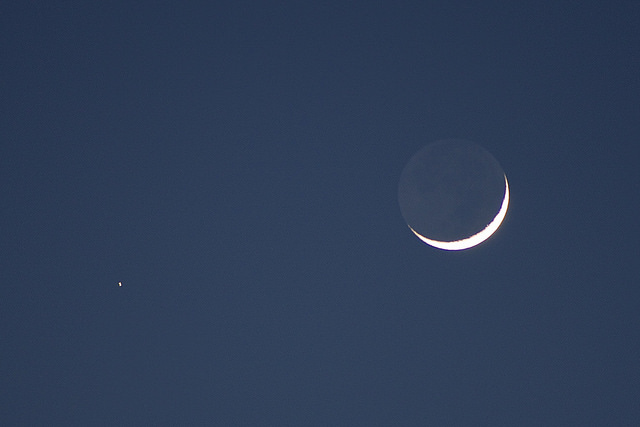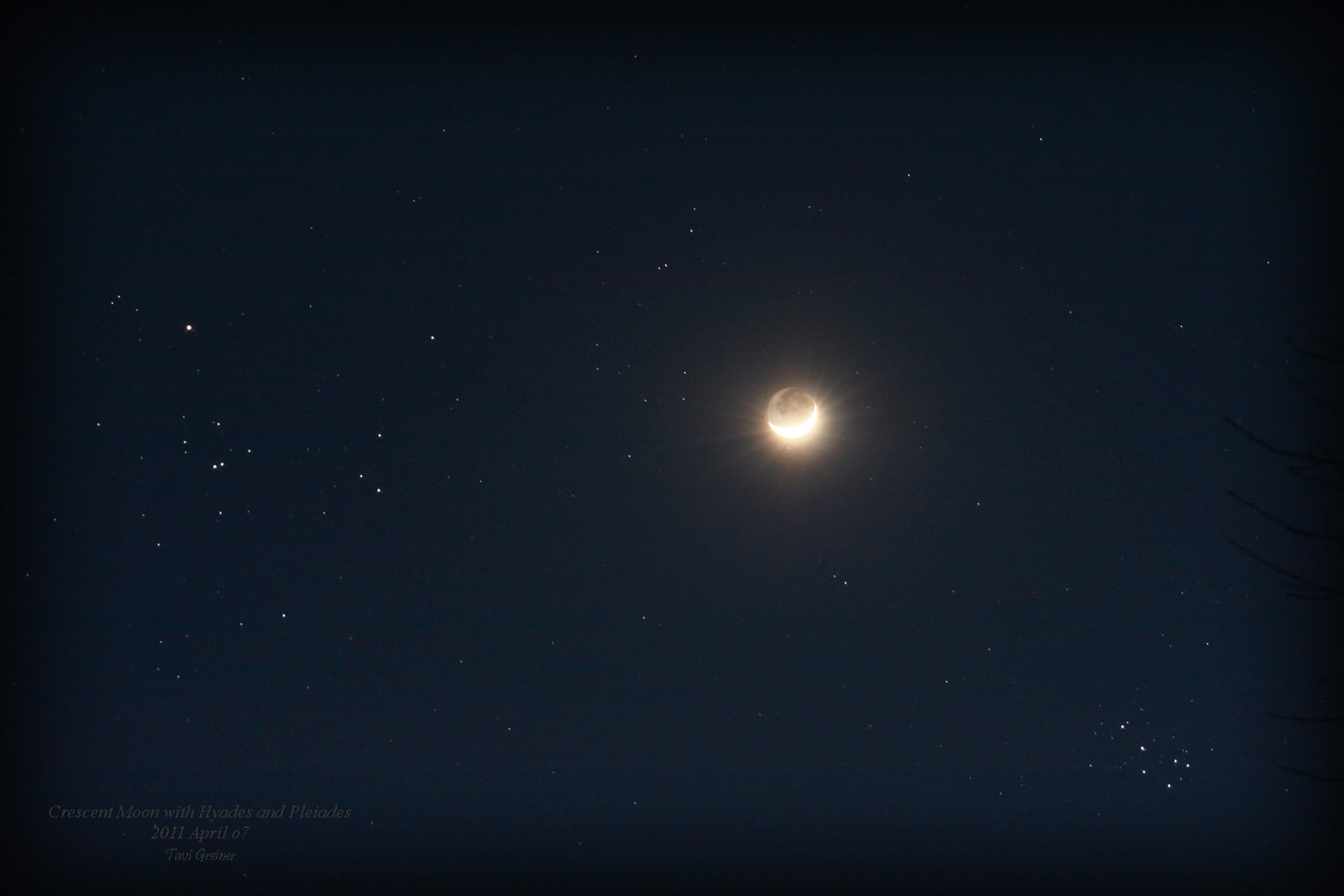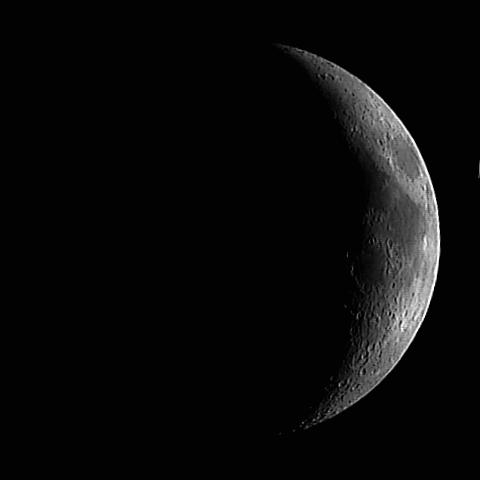In the constellation Taurus, there is a cluster of a few hundred stars known as the Hyades. The cluster is just 150 light-years away, and it could be harboring a stellar-mass black hole.
Continue reading “The Closest Black Holes to Earth are Probably Hidden in This Nearby Star Cluster”Occultation Palooza: The Moon Covers Aldebaran and More
This week, we thought we’d try an experiment for tonight’s occultation of Aldebaran by the Moon. As mentioned, we’re expanding the yearly guide for astronomical events for the year in 2017. We’ve done this guide in various iterations since 2009, starting on Astroguyz and then over to Universe Today, and it has grown from a simple Top 10 list, to a full scale preview of what’s on tap for the following year.
You, the reader, have made this guide grow over the years, as we incorporate feedback we’ve received.
Anyhow, we thought we’d lay out this week’s main astro-event in a fashion similar to what we have planned for the guide: each of the top 101 events will have a one page entry (two pages for the top 10 events) with a related graphic, fun facts, etc.
So in guide format, tonight’s occultation of Aldebaran would break down like this:
Wednesday, September 21st: The Moon Occults Aldebaran
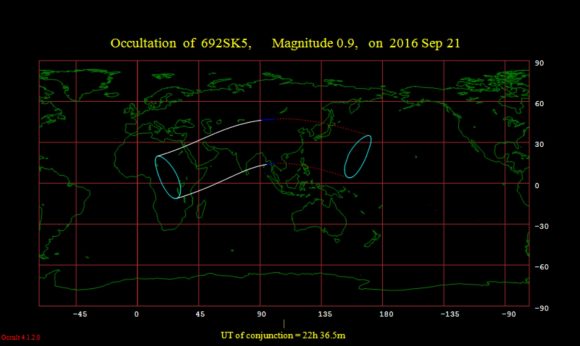
Image credit Occult 4.2
The 67% illuminated waning gibbous Moon occults the +0.9 magnitude star Aldebaran. The Moon is two days prior to Last Quarter phase during the event. Both are located 109 degrees west of the Sun at the time of the event. The central time of conjunction is 22:37 Universal Time (UT). The event occurs during the daylight hours over southeast Asia, China, Japan and the northern Philippines and under darkness for India, Pakistan and the Arabian peninsula and the Horn of Africa. The Moon will next occult Aldebaran on October 19th. This is occultation 23 in the current series of 49 running from January 29th 2015 to September 3rd, 2018. This is one of the more central occultations of Aldebaran by the Moon for 2016.
The view from India tonight, just before the occultation begins. Image credit: Stellarium
Fun Fact-In the current century, (2001-2100 AD) the Moon occults Aldebaran 247 times, topped only by Antares (386 times) and barely beating out Spica (220 times).
Or maybe, another fun fact could be: A frequent setting for science fiction sagas, Aldebaran is now also often confused in popular culture with Alderaan, Princess Leia’s late homeworld from the Star Wars saga.
Like it? Thoughts, suggestions, complaints?
Now for the Wow! Factor for tonight’s occultation. Aldebaran is 65 light years distant, meaning the light we’re seeing left the star in 1951 before getting photobombed by the Moon just over one second before reaching the Earth.
There are also lots of other occultations of fainter stars worldwide over the next 24 hours, as the Moon crosses the Hyades.
And follow that Moon, as a series of 20 occultations of the bright star Regulus during every lunation begins later this year on December 18th.
Gadi Eidelheit managed to catch the March 14th, 2016 daytime occultation of Aldebaran from Israel:
And also in the ‘Moon passing in front of things’ department, here’s a noble attempt at capturing a difficult occultation of Neptune by the Moon last week on September 15th, courtesy of Veijo Timonen based in Hämeenlinna Finland:
Lets see, that’s a +8th magnitude planet next to a brilliant -13th magnitude Moon, one million (15 magnitudes) times brighter… it’s amazing you can see Neptune at all!
Last item: tomorrow marks the September (southward) equinox, ushering in the start of astronomical fall in the northern hemisphere, and the beginning of Spring in the southern. The precise minute of equinoctial crossing is 14:21 UT. In the 21st century, the September equinox can fall anywhere from September 21st to September 23rd. Bob King has a great recent write-up on the equinox and the Moon.

Don’t miss tonight’s passage of Aldebaran through the Hyades, and there’s lots more where that came from headed into 2017!
See a Wonderful Aldebaran Occultation with a Spectacular Twist
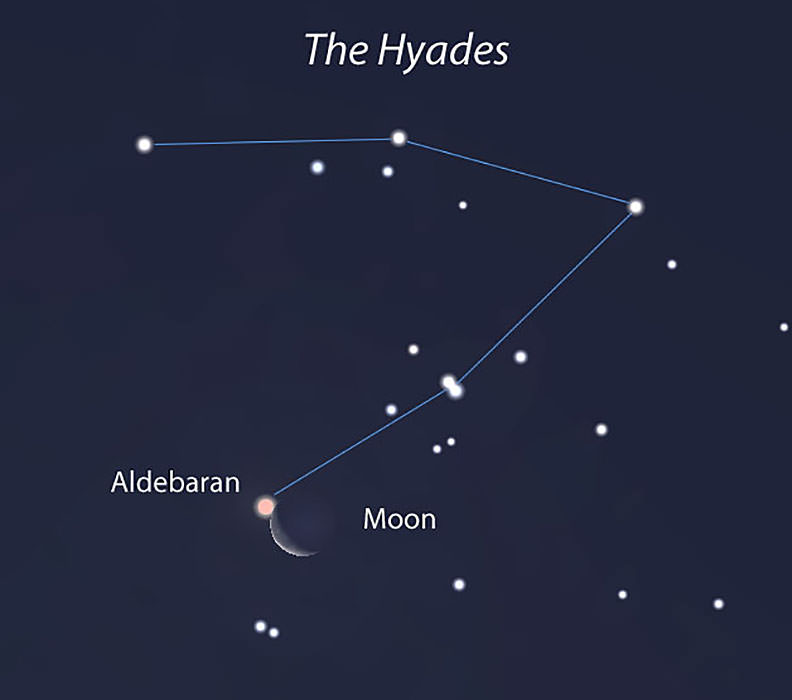
We’re in for a celestial show from two of the sky’s glitterati this week. On Friday morning July 29 around 10:00 UT (5 a.m. CDT), the crescent Moon will occult the star Aldebaran from the eastern and southern U.S. south of a line from Toledo, Ohio through St. Louis, Tulsa and El Paso, Texas. North of that line, the Moon will slide just south of the star in a spectacular conjunction. But the real action lies within a half-mile of either side of the line, where lucky observers will see a grazing occultation.
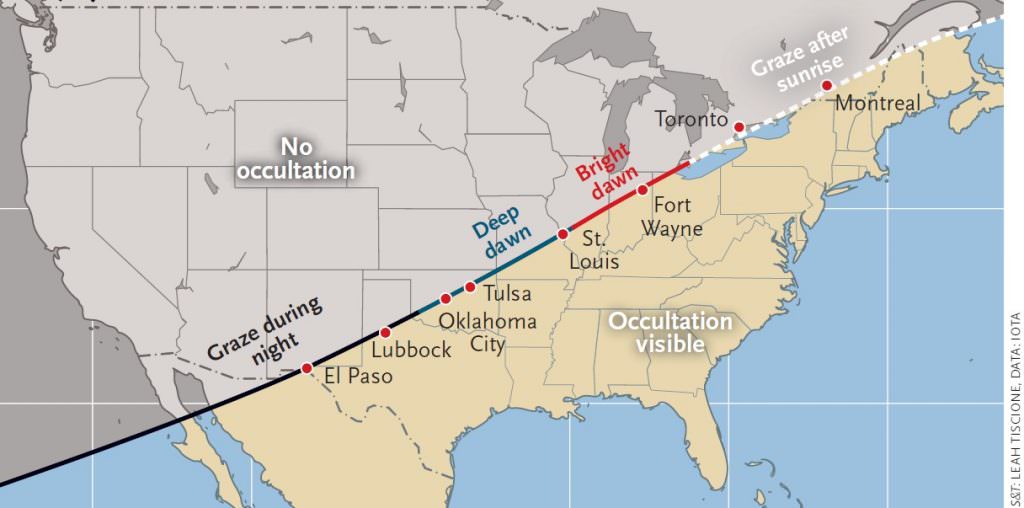
As the Moon’s orbital motion carries it eastward at the rate of one lunar diameter per hour, Aldebaran will appear to approach the sunlit northern cusp and then scrape along the Moon’s northern limb. You’ll need binoculars or a small telescope to see the initial approach, but once star reaches the semi-dark, earthlit portion of the Moon, the graze will be visible with the naked eye.
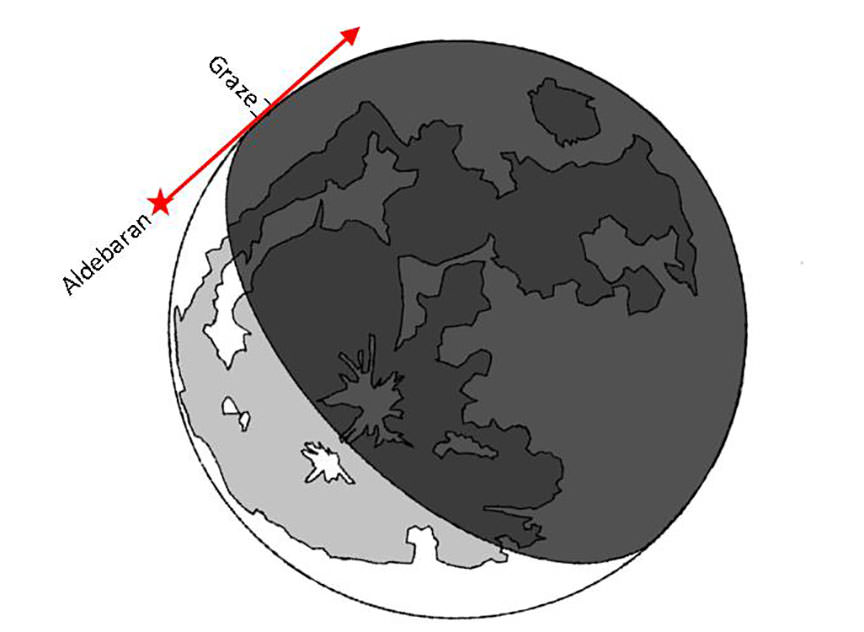
The edge or limb of the Moon appears smooth to the eye, but it’s rife with polar mountain peaks. As Aldebaran creeps along the craggy limb, it will repeatedly flash in and out of view as peaks and cliffs momentarily block it from sight. And here’s the truly amazing thing. Observers along the western section of the graze line, where the event takes place in fairly dark sky, can watch the star blink in and out of view without optical aid when it reaches the dark part of the lunar disk. Wow!
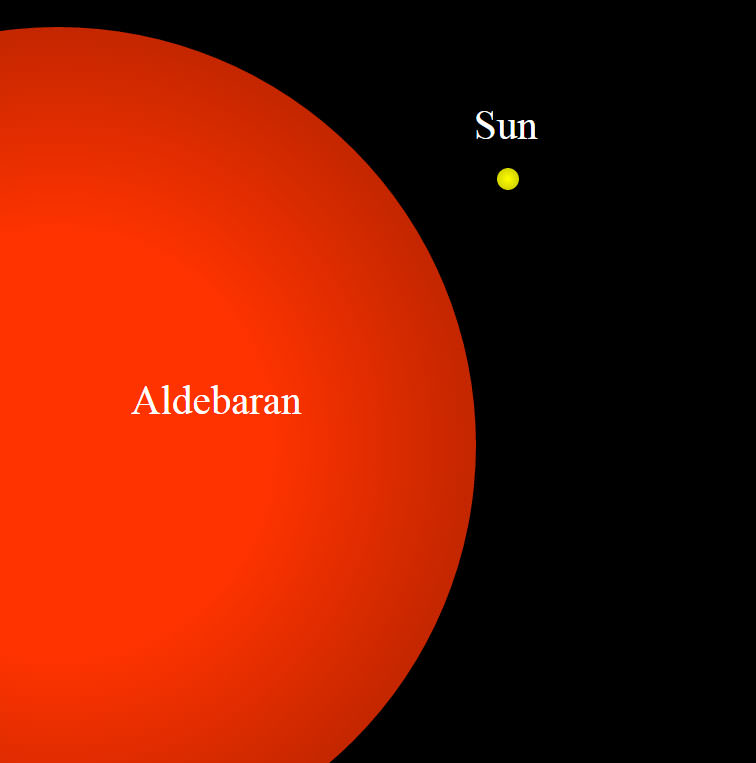
Aldebaran is no small star. An orange giant 67 light years from Earth, it’s 44 times the diameter of the Sun. That means that sometimes only a part of the star at a time will covered at a time in some cases, so the length of the flashes will vary. According to David Dunham, president of the International Occultation Timing Association (IOTA), Aldebaran will disappear for one-tenth of a second up to a second as the Moon rolls east, allowing some observers to sense the size of the star. Wow x 100!
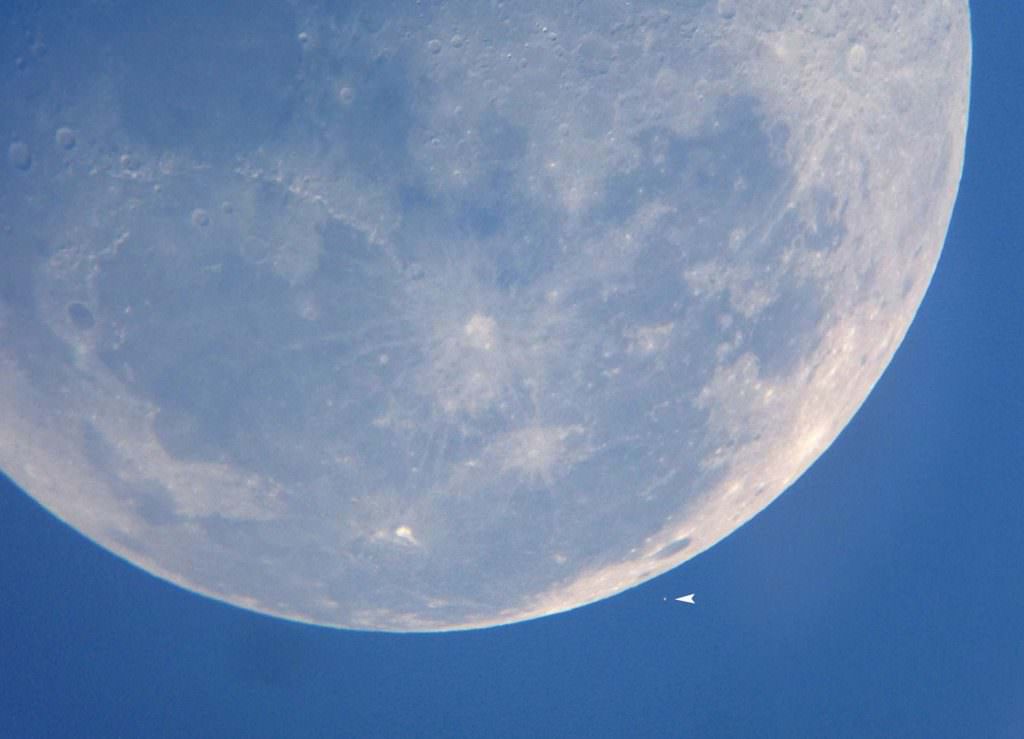
Skywatchers further east along the graze line and in other areas where the occultation / conjunction takes place after sunrise shouldn’t pass up the chance to see the event. During last October’s occultation of Aldebaran, I was able to see and photograph the star in my 10-inch scope in daylight no problem. The moon will be closer to the Sun this time around, but give it try anyway. This is the best grazing occultation of Aldebaran visible from North America in the current 4-year series.
For the many who live either north or south of the graze line, the views will still be fantastic. You’ll either see an occultation and subsequent reappearance of the star at the dark limb … or a fine conjunction. The forecast looks good for my city, so I plan on heading out to watch an orange giant meet the skinny Moon. I wish you clear skies and happy shooting!
For more information about the event including detailed weather forecasts and grazing maps, check out the IOTA’s public announcement page. Click here for Universal Times for the disappearance and reappearance of the star for over 1,000 cities.
Watch the Moon Beat a Path Across the Hyades Tonight
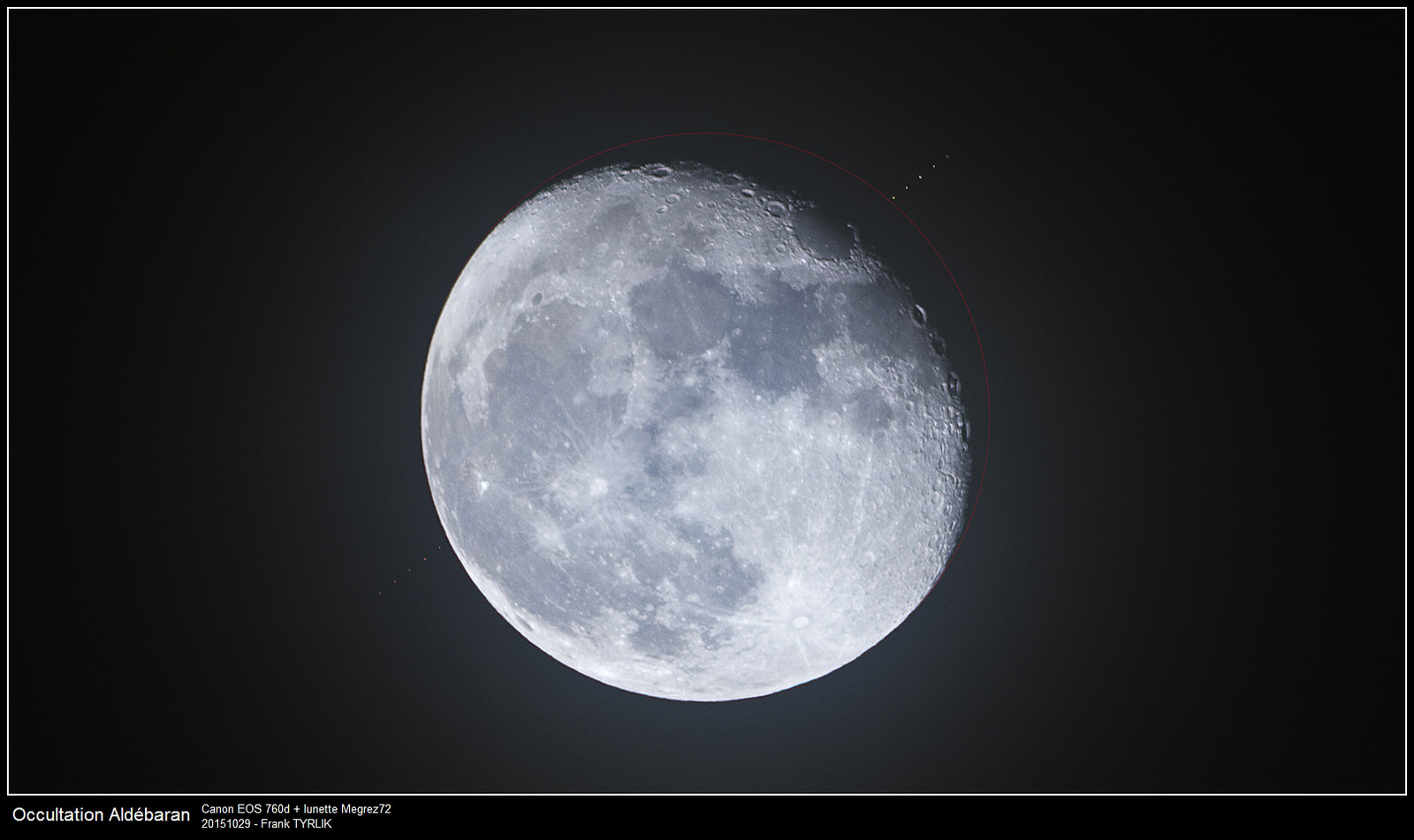
“Once more, unto the breech…” Ready to brave the February cold and the ongoing arctic polar express? Tonight, North American skywatchers will witness an encore event, as the waxing gibbous Moon crosses the Hyades star cluster and – for a lucky few — occults the bright star Aldebaran. Continue reading “Watch the Moon Beat a Path Across the Hyades Tonight”
Luna vs. the Hyades! The 1st of 13 Occultations of Aldebaran Set For January 29th
The cosmos is continually in motion.
Be it atoms, stars or snowflakes from the latest nor’easter pounding the New England seaboard, anything worth studying involves movement. And as skies and snowbound roads clear, this Wednesday and Thursday evening will give us a reason to brave the January cold, as the waxing gibbous Moon pierces the Hyades star cluster to graze past the bright star Aldebaran.
During Thursday night’s passage, the Moon will be 78% illuminated. In a sort ‘cosmos mimics controversy’ irony, the gibbous Moon is doing its best to mimic a sky bound ‘deflategate’ football just in time for Superbowl XLIX this weekend.
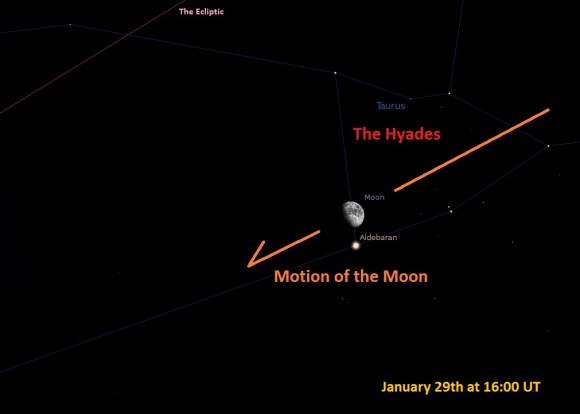
But the January 29th event also marks the first occultation of Aldebaran for 2015.
Fun fact: At magnitude +0.8, Aldebaran is the only star brighter than +1st magnitude north of the celestial equator that the Moon can currently occult. Regulus, the runner up, shines at magnitude +1.4. Two other second magnitude stars — Antares and Spica — lie along the Moon’s path on occasion, and up until the 2nd century BC, it was possible for the Moon to occult Pollux in the constellation Gemini as well.
There are 13 occultations of Aldebaran in 2015, and the Moon occults the star 49 times overall until the last event in the current cycle on September 3rd, 2018. Aldebaran is also occulted by the Moon more often in the current 2010-2020 decade than any other bright star. You can even spy Aldebaran near the daytime Moon with binoculars, as we did back in 1996 from North Pole, Alaska.
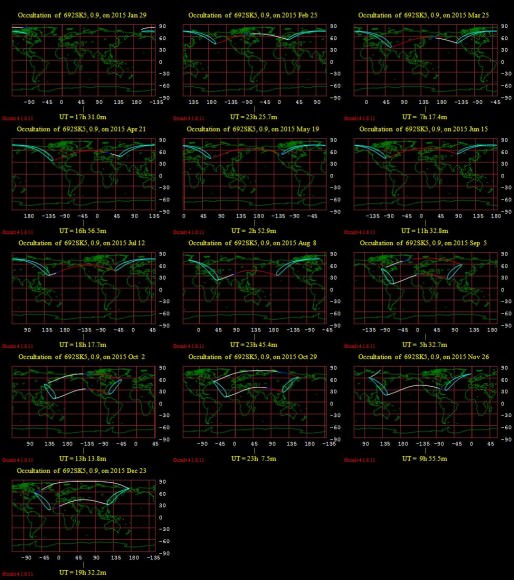
Of course, the January 29th event is an occultation only for the high Arctic, with only a scattering of villages and distant early warning stations along the northern Nunavut coast welcoming the sequence of 2015 occultations of the bright star.
The rest of us will see a close photogenic pass, as the Moon makes an end run through the Hyades star cluster every 27.3 day sidereal lunar month in 2015. The Moon will thus occult several members of the Hyades on each pass. Our best bet for North America is the occultation of Aldebaran on November 26th, though the Moon will be just 13 hours past Full.
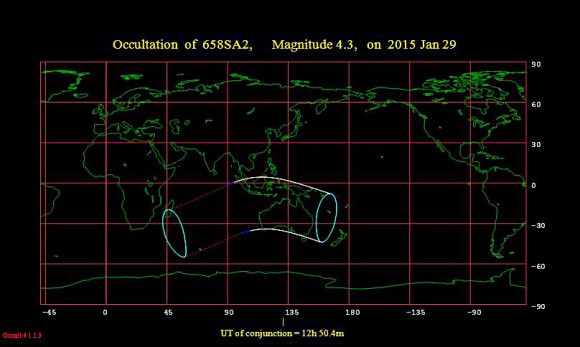
Why doesn’t the path of the Moon just stay put with respect to the sky? Because the orbit of our Moon is fixed at an inclination of 5.1 degrees not with respect to our equator, but to the plane of the ecliptic. This means that the Moon’s orbit is in motion as well, and can wander anywhere from declination 28.6 degrees north to south as it cycles from a shallow to steep path every 18.6 years. We’re actually in a shallow year in 2015 (known as a minor lunar standstill) after which the apparent path of the Moon through the sky begins to widen again until April 2025.
An occultation is celestial motion that you can see in real time as a star or planet is photobomb’d by the onrushing Moon like a January snowplow… but those background stars are in motion as well.
The Hyades themselves — along with our own solar system — are moving around the galactic center. The nearest open cluster to us at 153 light years distant, the Hyades provided a unique object of study for 19th century astronomers. Astronomer Lewis Boss of the Dudley observatory spent several decades studying the proper motion — the apparent motion that a star seems to be moving across the sky from our solar system-bound perspective, measured in arc seconds — of the Hyades, and found the entire group was converging on a point in the constellation Orion near 6 hours 7’ right ascension and +7 degrees declination.
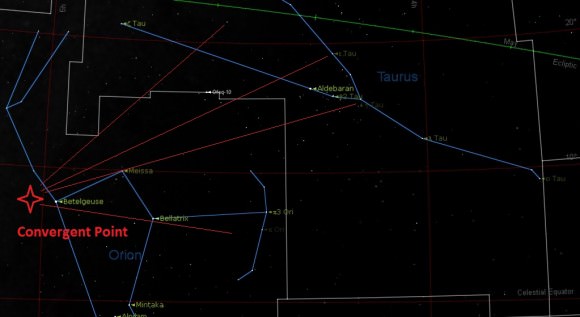
Of course, this motion is relative and demonstrates a changing perspective, as the Hyades recedes from our solar system like a defensive line rushing to sack a quarterback.
OK, enough with the sports similes. The Hyades are so close that the actual Hyades Stream — often referred to as the Hyades Moving Group — is actually strewn across the constellations Orion, Taurus and Aries and more.
Some stars, such as 20 Arietis in the adjacent constellation Aries and Iota Horologii in the southern hemisphere may actually members as well. There’s always a bit of ongoing controversy when it comes to actual moving group membership, which is usually pegged by determining proper motion, coupled with the age and metallicity of prospective stars. Growing up in the Milky Way galaxy, our Sun was once a member of some unnamed ancient open cluster that has since long dispersed, like the Hyades are in the process of doing now.
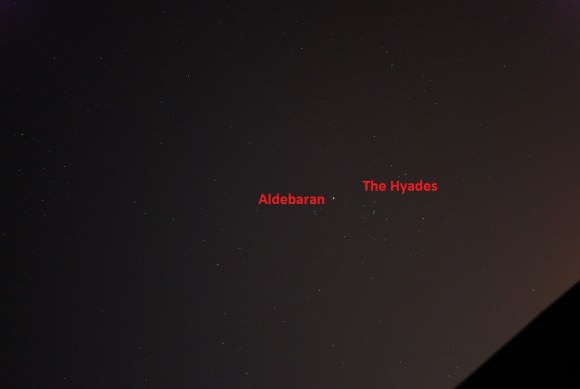
The Hyades contains hundreds of stars and ironically, Aldebaran is not a member of the cluster, but is merely 65 light years away from us in the foreground. The V-shaped asterism of the Hyades gives the Head of Taurus the Bull its distinctive shape. The Hyades are named after the rain nymph daughters of Atlas from Greek mythology, whose half daughters the Pleiades also adorn the nearby sky.
And as an added bonus, don’t miss comet C/2014 Q2 Lovejoy crossing the constellation Triangulum, also nearby. Q2 Lovejoy reaches perihelion this week on January 30th, and although it’s completing with the evening Moon, it’s still holding out at a respectable magnitude +4.5.
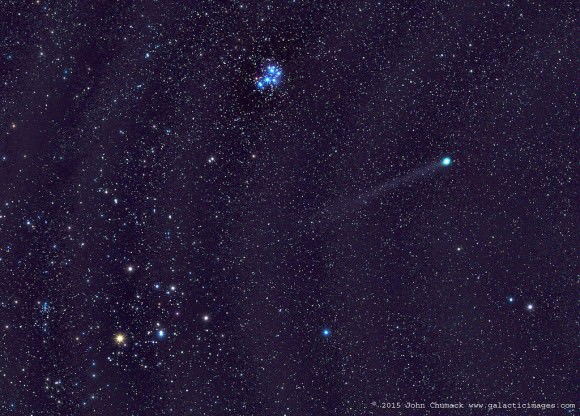
All reasons to get out these chilly January evenings and ponder a hurried universe continually in motion, both fast and slow.
-Check out Q2 Lovejoy on January 30th courtesy of the Virtual Telescope project.
Observing Alert: Watch the Moon Cross the Hyades This Week
A photogenic grouping greets evening sky watchers this week providing a fine teaser leading up to a spectacular eclipse.
On the evening of Thursday, April 3rd headed into the morning of the 4th, the waxing crescent Moon crosses in front of the Hyades open star cluster. This is the V-shaped asterism that marks the head on Taurus the Bull, highlighted by the brilliant foreground star Aldebaran as the bull’s “eye”. Viewers across North America will have a ring-side seat to this “bull-fight” as the 20% illuminated Moon stampedes over several members of the Hyades in its path.
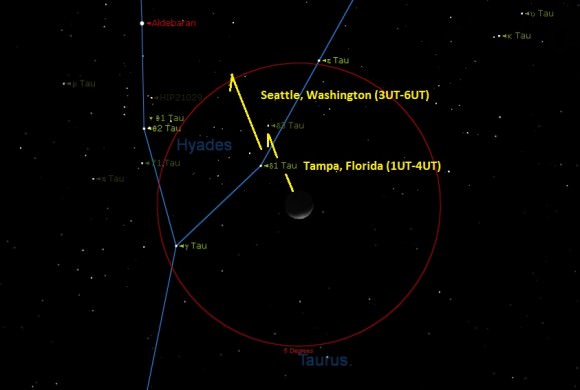
The brightest stars to be occulted are the Delta Tauri trio of stars ranging in magnitudes from +3.8 (Delta Tauri^1) to +4.8(2) and +4.3(3). Such occlusions – known in astronomy as occultations – are fun to watch, and can reveal the existence of close binary companions as they wink out behind the lunar limb. Several dozen occultations of stars brighter than +5th magnitude by the Moon happen each year, and the best events occur when the Moon is waxing and the stars disappear against its dark leading edge. We recently caught one such event last month when the Moon occulted the bright star Lambda Geminorum:
We are currently seeing the Moon cross the Hyades during every lunation until the year 2020, though it’s a particularly favorable time to catch the event in April 2014 as the Moon is a slender crescent. Notice that you can just make out the dark limb of the Moon with the naked eye? What you’re seeing is termed Earthshine, and that’s just what it is: the nighttime side of the Moon being illuminated by sunlight that is reflected off of the Earth. Standing on the Earthward side of the Moon, an observer would see a waning gibbous Earth about two degrees across. Yutu has a great view!
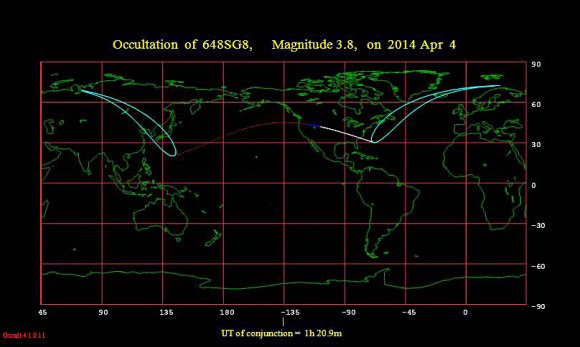
The Moon will cross its descending node where its apparent path intersects the ecliptic on April 1st (no joke, we swear) at 2:30 Universal Time or 10:30 PM EDT on March 31st. The next nodal crossing now occurs in just two weeks, and the Earth’s shadow will be there to greet the Moon on the morning of April 15th in the first of four total lunar eclipses that span 2014 and 2015. The month of April also sees the Moon’s orbit at its least eccentric, a time at which perigee – the Moon’s closest point to Earth – is at its most distant and apogee – its farthest point – is at its closest. This currently happens near the equinoxes, through the nodes slowly travel across the ecliptic completing one revolution every 18.6 years. Perigee can vary from 356,400 to 370,400 kilometres, and apogee can span a distance from 404,000 to 406,700 kilometres.
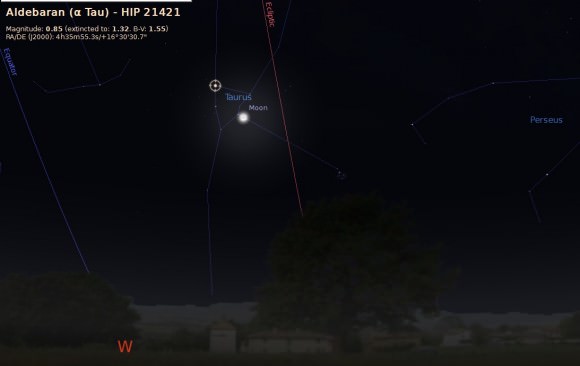
We’re also headed towards a “shallow year” in 2015 when the Moon has the least variability in respect to its declination. This trend will then reverse, climaxing with a “Long Nights Moon” riding high in the sky in 2025, which last occurred in 2006. The Moon will inch ever closer to Aldebaran on every successive lunation now, and begins a series of occultations of Aldebaran on January 29th, 2015 through the end of 2018. Occultations of Aldebaran always occur near these shallow years, and will be followed by a cycle of occultations of Regulus starting in 2017. We caught an excellent daytime occultation of Aldebaran by the Moon from North Pole, Alaska during the last cycle in the late 1990s.
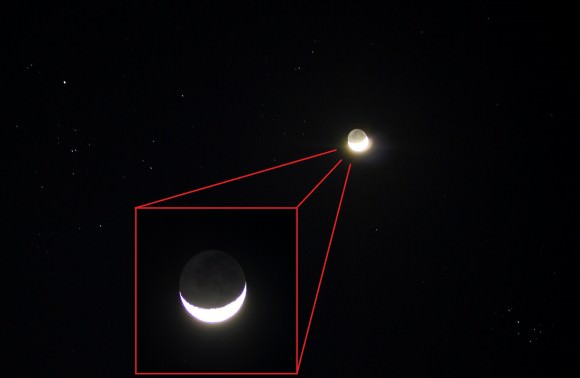
Now for the wow factor. Our Moon is 3,474 kilometres across and located just over one light second away. The Hyades star cluster covers about 6 ½ degrees of sky – about 7 times the size of the Full Moon – but is the closest open cluster to the Earth at 153 light years distant and has a core diameter of about 18 light years across. As mentioned previous, Aldebaran isn’t physically associated with the Hyades, but is merely located in the same direction at 65 light years distant.
The Hyades star cluster also provided early 20th astronomers with an excellent study in galactic motion. At an estimated 625 million years in age, the Hyades are slowly getting disbanded and strewn about the Milky Way galaxy in a process known as evaporation. The Hyades are also part of a larger stellar incorporation known as the Taurus Moving Cluster. Moving at an average of about 43 kilometres a second, the members of the Hyades are receding from us towards a divergent point near the bright star Betelgeuse in the shoulder of Orion. 50 million years hence, the Hyades will be invisible to the naked eye as seen from Earth, looking like a non-descript open cluster and providing a much smaller target for the Moon to occult at 20’ across. Astronomer Lewis Boss was the first to plot the motion of the Hyades through space in 1908, and the cluster stands as an essential rung on the cosmic distance ladder, with agreeing measurements independently made by both Hubble and Hipparcos and soon to be refined by Gaia.
Photographing and documenting this week’s passage of our Moon across the Hyades is easy with a DSLR camera: don’t be afraid to vary those ISO and shutter speeds to get the mix of the brilliant crescent Moon, the fainter earthshine, and background stars just right. The more adventurous might want to try actually catching the numerous occultations of bright stars on video. And U.S. and Canadian west coast observers are well placed to catch the Moon cross right though the core of the Hyades… a video animation of the event is not out of the question!
And from there, the Moon heads on to its date with destiny and a fine total lunar eclipse on April 15th which favors North American longitudes. We’ll be back later this week with our complete and comprehensive eclipse guide!
Hubble Observes Planet-“Polluted” Dead Stars In Hyades
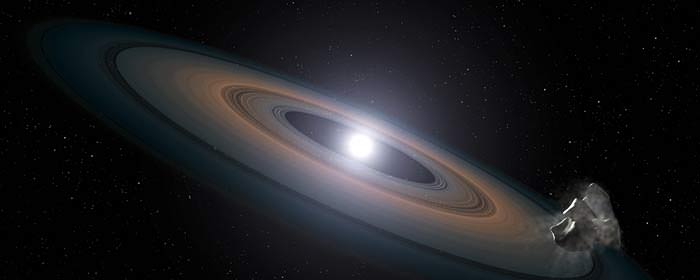
For those of us who practice amateur astronomy, we’re very familiar with the 150 light-year distant Hyades star cluster – one of the jewels in the Taurus crown. We’ve looked at it countless times, but now the NASA/ESA Hubble Space Telescope has taken its turn observing and spotted something astronomers weren’t expecting – the debris of Earth-like planets orbiting white dwarf stars. Are these “burn outs” being polluted by detritus similar to asteroids? According to researchers, this new observation could mean that rocky planet creation is commonplace in star clusters.
“We have identified chemical evidence for the building blocks of rocky planets,” said Jay Farihi of the University of Cambridge in England. He is lead author of a new study appearing in the Monthly Notices of the Royal Astronomical Society. “When these stars were born, they built planets, and there’s a good chance they currently retain some of them. The material we are seeing is evidence of this. The debris is at least as rocky as the most primitive terrestrial bodies in our solar system.”
So what makes this an uncommon occurrence? Research tells us that all stars are formed in clusters, and we know that planets form around stars. However, the equation doesn’t go hand in hand. Out of the hundreds of known exoplanets, only four are known to have homes in star clusters. As a matter of fact, that number is a meager half percent, but why? As a rule, the stars contained within a cluster are young and active. They are busy producing stellar flares and similar brilliant activity which may mask signs of emerging planets. This new research is looking to the “older” members of the cluster stars – the grandparents which may be babysitting.
To locate possible candidates, astronomers have employed Hubble’s Cosmic Origins Spectrograph and focused on two white dwarf stars. Their return showed evidence of silicon and just slight levels of carbon in their atmospheres. This observation was important because silicon is key in rocky materials – a prime ingredient on Earth’s list and other similar solid planets. This silicon signature may have come from the disintegration of asteroids as they wandered too close to the stars and were torn apart. A lack of carbon is equally exciting because, while it helps shape the properties and origins of planetary debris, it becomes scarce when rocky planets are formed. This material may have formed a torus around the defunct stars which then drew the matter towards them.
“We have identified chemical evidence for the building blocks of rocky planets,” said Farihi. “When these stars were born, they built planets, and there’s a good chance they currently retain some of them. The material we are seeing is evidence of this. The debris is at least as rocky as the most primitive terrestrial bodies in our solar system.”
Ring around the rosie? You bet. This leftover material swirling around the white dwarf stars could mean that planet formation happened almost simultaneously as the stars were born. At their collapse, the surviving gas giants may have had the gravitational “push” to relocate asteroid-like bodies into “star-grazing orbits”.
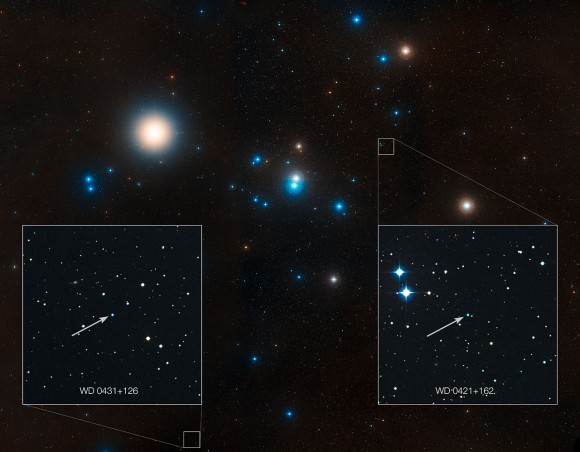
Inset, the locations of these white dwarf stars are indicated — stars known as WD 0421+162, and WD 0431+126. Credit: NASA, ESA, STScI, and Z. Levay (STScI)
“We have identified chemical evidence for the building blocks of rocky planets,” explains Farihi. “When these stars were born, they built planets, and there’s a good chance that they currently retain some of them. The signs of rocky debris we are seeing are evidence of this — it is at least as rocky as the most primitive terrestrial bodies in our Solar System. The one thing the white dwarf pollution technique gives us that we won’t get with any other planet detection technique is the chemistry of solid planets. Based on the silicon-to-carbon ratio in our study, for example, we can actually say that this material is basically Earth-like.”
What of future plans? According to Farihi and the research team, by continuing to observe with methods like those employed by Hubble, they can take an even deeper look at the atmospheres around white dwarf stars. They will be searching for signs of solid planet “pollution” – exploring the white dwarf chemistry and analyzing stellar composition. Right now, the two “polluted” Hyades white dwarfs are just a small segment of more than a hundred future candidates which will be studied by a team led by Boris Gansicke of the University of Warwick in England. Team member Detlev Koester of the University of Kiel in Germany is also contributing by using sophisticated computer models of white dwarf atmospheres to determine the abundances of various elements that can be traced to planets in the Hubble spectrograph data.
“Normally, white dwarfs are like blank pieces of paper, containing only the light elements hydrogen and helium,” Farihi said. “Heavy elements like silicon and carbon sink to the core. The one thing the white dwarf pollution technique gives us that we just won’t get with any other planet-detection technique is the chemistry of solid planets.”
The team also plans to look deeper into the stellar composition as well. “The beauty of this technique is that whatever the Universe is doing, we’ll be able to measure it,” Farihi said. “We have been using the Solar System as a kind of map, but we don’t know what the rest of the Universe does. Hopefully with Hubble and its powerful ultraviolet-light spectrograph COS, and with the upcoming ground-based 30- and 40-metre telescopes, we’ll be able to tell more of the story.”
And we’ll be listening…
Original Story Source: Hubble News Release.
Weekly SkyWatcher’s Forecast: November 12-18, 2012
Greetings, fellow SkyWatchers! While we might have to contend with the Moon again, it’s still going to be a very exciting week because the Leonid Meteor Shower is back in town! The beginning of the week brings on the Pegasid meteors and we can all use a “warm up”! There’s plenty of things to do, so whenever you’re ready, just meet me in the back yard.
Monday, November 12 – Wouldn’t we all have loved to have been there in 1949 when the first scientific observations were made with the Palomar 5-meter (200-inch) telescope? Or to have seen what Voyager 1 saw as it made its closest approach to Saturn on this date in 1980? To watch Space Shuttle Columbia launch in 1981? Or even better, to have been around in 1833 – the night of the Great Leonid Meteor Shower! But this is here and now, so let’s make our own mark on the night sky as we view the waning Moon.
This evening have a look at the lunar surface and the southeast shoreline of Mare Crisium for Agarum Promontorium. To a small telescope it will look like a bright peninsula extending northward across the dark plain of Crisium’s interior, eventually disappearing beneath the ancient lava flow. Small crater Fahrenheit can be spotted at high power to the west of Agarum, and it is just southeast of there that Luna 24 landed. If you continue south of Agarum along the shoreline of Crisium you will encounter 15 kilometer high Mons Usov. To its west is a gentle rille known as Dorsum Termier – where the Luna 15 mission remains lie. Can you spot 23 kilometer wide Shapely further south?
While skies are fairly dark be sure to keep watch for members of the Pegasid meteor shower – the radiant is roughly near the Great Square. This stream endures from mid-October until late November, and used to be quite spectacular.
Tuesday, November 13 – Today is the birthday of James Clerk Maxwell. Born in 1831, Maxwell was a leading English theoretician on electromagnetism and the nature of light. Tonight let’s take a journey of 150 light-years as we honor Maxwell’s theories of electricity and magnetism as we take a look at a star that is in nuclear decay – Alpha Ceti.
Its name is Menkar, and this second magnitude orange giant is slowly using up its nuclear fuel and gaining mass. According to Maxwell’s theories of the electromagnetic and weak nuclear forces, W bosons must exist in such circumstances – this was an extremely advanced line of thinking for the time. Without getting deep into the physics, simply enjoy reddish Alpha for the beauty that it is. Even small telescopes will reveal its 5th magnitude optical partner 93 Ceti to the north. It’s only another 350 light-years further away! You’ll be glad you took the time to look this one up, because the wide separation and color contrast of the pair make this tribute to Maxwell worth your time!
Wednesday, November 14 – Ready to aim for a bullseye? Then follow the “Archer” and head right for the bright, reddish star Aldebaran. Set your eyes, scopes or binoculars there and let’s look into the “eye” of the Bull. Known to the Arabs as Al Dabaran, or “the Follower,” Alpha Tauri got its name because it appears to follow the Pleiades across the sky. In Latin it was called Stella Dominatrix, yet the Olde English knew it as Oculus Tauri, or very literally the “eye of Taurus.” No matter which source of ancient astronomical lore we explore, there are references to Aldebaran.
As the 13th brightest star in the sky, it almost appears from Earth to be a member of the V-shaped Hyades star cluster, but this association is merely coincidental, since it is about twice as close to us as the cluster is. In reality, Aldebaran is on the small end as far as K5 stars go, and like many other orange giants, it could possibly be a variable. Aldebaran is also known to have five close companions, but they are faint and very difficult to observe with backyard equipment. At a distance of approximately 68 light-years, Alpha is “only” about 40 times larger than our own Sun and approximately 125 times brighter. Because of its position along the ecliptic, Aldebaran is one of the very few stars of first magnitude that can be occulted by the Moon.
This evening on the Moon we will be returning to familiar features Theophilus, Cyrillus and Catharina. Why not take the time to really power up on them and look closely? Curving away just to the southwest of Catharina on the terminator is another lunar challenge feature, Rupes Altai, or the Altai Scarp. Look for smaller craters beginning to emerge, such as Kant to the northwest, Ibn-Rushd just northwest of Cyrillus and Tacitus to the west.
Thursday, November 15 – Today marks a very special birthday in history. On this day in 1738, my personal hero William Herschel was born. Among this British astronomer and musician’s many accomplishments, Herschel was credited with the discovery of the planet Uranus in 1781, the motion of the Sun in the Milky Way in 1785, Castor’s binary companion in 1804; and he was the first to record infrared radiation. Herschel was well known as the discoverer of many clusters, nebulae, and galaxies. This came through his countless nights studying the sky and writing catalogs whose information we still use today. Just look at how many we’ve logged this year! Tonight let’s look towards Cassiopeia as we remember this great astronomer…
Almost everyone is familiar with the legend of Cassiopeia and how the Queen came to be bound in her chair, destined for an eternity to turn over and over in the sky, but did you know that Cassiopeia holds a wealth of double stars and galactic clusters? Seasoned sky watchers have long been familiar with this constellation’s many delights, but let’s remember that not everyone knows them all, and tonight let’s begin our exploration of Cassiopeia with two of its primary stars.
Looking much like a flattened “W,” its southern-most bright star is Alpha. Also known as Schedar, this magnitude 2.2 spectral type K star was once suspected of being a variable, but no changes have been detected in modern times. Binoculars will reveal its orange/yellow coloring, but a telescope is needed to bring out its unique features. In 1781, Herschel discovered a 9th magnitude companion star and our modern optics easily separate the blue/white component’s distance of 63″. A second, even fainter companion at 38″ is mentioned in the list of double stars and even a third at 14th magnitude was spotted by S.W. Burnham in 1889. All three stars are optical companions only, but make 150 to 200 light-year distant Schedar a delight to view!
Just north of Alpha is the next destination for tonight…Eta Cassiopeiae. Discovered by Herschel in August of 1779, Eta is quite possibly one of the most well-known of binary stars. The 3.5 magnitude primary star is a spectral type G, meaning it has a yellowish color much like our own Sun. It is about 10% larger than Sol and about 25% brighter. The 7.5 magnitude secondary (or B star) is very definitely a K-type: metal poor, and distinctively red. In comparison, it is half the mass of our Sun, crammed into about a quarter of its volume and is around 25 times dimmer. In the eyepiece, the B star will angle off to the northwest, providing a wonderful and colorful look at one of the season’s finest!
Friday, November 16 – Today in 1974, there was a party at Arecibo, Puerto Rico, as the new surface of the giant 1000-foot radio telescope was dedicated. At this time, a quick radio message was released in the direction of the globular cluster M13.
And now the annual Leonid meteor shower is underway! For those of you seeking a definitive date and time, it isn’t always possible. The meteor shower itself belongs to the debris shed by comet 55/P Tempel-Tuttle as it passes our Sun in its 33.2 year orbital period. Although it was once assumed that we would merely add around 33 years to each observed “shower,” we later came to realize that the debris formed a cloud that lagged behind the comet and dispersed irregularly. With each successive pass of Tempel-Tuttle, new filaments of debris were left in space along with the old ones, creating different “streams” that the orbiting Earth passes through at varying times, which makes blanket predictions unreliable at best.
Saturday, November 17 – If you didn’t stay up late, then get up early this morning to catch the Leonids. Each year during November, we pass through the filaments of debris – both old and new – and the chances of impacting a particular stream from any one particular year of Tempel-Tuttle’s orbit becomes a matter of mathematical estimates. We know when it passed… We know where it passed… But will we encounter it and to what degree?
Traditional dates for the peak of the Leonid meteor shower occur as early as the morning of November 17 and as late as November 19, but what about this year? On November 8, 2005 the Earth passed through an ancient stream shed in 1001. Predictions ran high for viewers in Asia, but the actual event resulted in a dud. There is no doubt that we crossed through that stream, but its probability of dissipation is impossible to calculate.
We may never know precisely where and when the Leonids might strike, but we do know that a good time to look for this activity is well before dawn on November 17, 18 and 19th. With the Moon mostly out of the way, wait until the radiant constellation of Leo rises and the chances are good of spotting one of the offspring of periodic comet Tempel-Tuttle. Your chances increase significantly by traveling a dark sky location, but remember to dress warmly and provide for your viewing comfort.
On this day in 1970, the long running Soviet mission Luna 17 successfully landed on the Moon. Its Lunokhod 1 rover became the first wheeled vehicle on the Moon. Lunokhod was designed to function three lunar days but actually operated for eleven. The machinations of Lunokhod officially stopped on October 4, 1971, the anniversary of Sputnik 1. Lunokhod had traversed 10,540 meters, transmitted more than 20,000 television pictures, over 200 television panoramas and performed more than 500 lunar soil tests. We’ll take a look at its landing site in the days ahead. Spaseba!
Sunday, November 18 – If you got clouded out of the Leonids yesterday morning, there is no harm in trying again before dawn! The meteor stream varies, and your chances are still quite good of catching one of these bright meteors.
Tonight let’s head toward an optical pairing of stars known as Zeta and Chi Ceti, a little more than a fistwidth northeast of bright Beta. Now have a look with binoculars or small scopes because you’ll find that each has its own optical companion!
Now drop south-southwest less than a fistwidth to have a look at something so unusual that you can’t help but be charmed – the UV Ceti System (RA 01 39 01 Dec -17 57 01).
What exactly is it? Also known as L 726-8, you are looking at two of the smallest and faintest stars known. This dwarf red binary system is the sixth nearest star to our solar system and resides right around nine light-years away. While you are going to need at least an intermediate-size scope to pick up these near 13th magnitude points of light, don’t stop observing right after you locate it. The fainter member of the two is what is known as a “Luyten’s Flare Star” (hence the “L” in its name). Although it doesn’t have a predictable timetable, this seemingly uninteresting star can jump two magnitudes in less than 60 seconds and drop back to “normal” within minutes – the cycle repeating possibly two or three times every 24 hours. A most incredible incident was recorded in 1952 when UV jumped from magnitude 12.3 to 6.8 in just 20 seconds!
Until next week? Wishing you clear skies!

